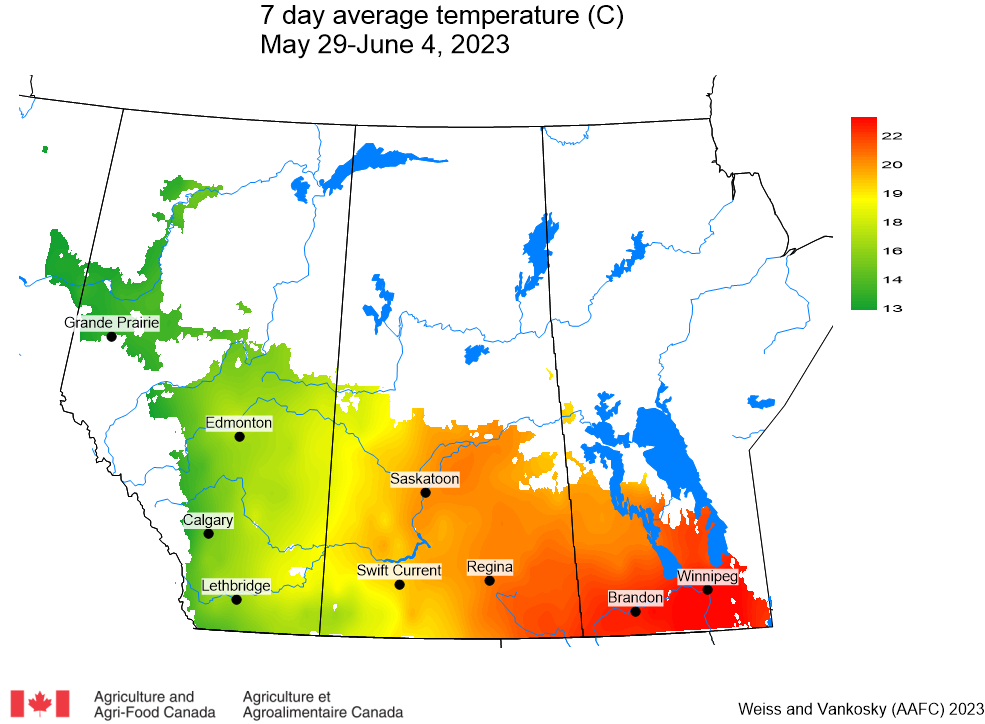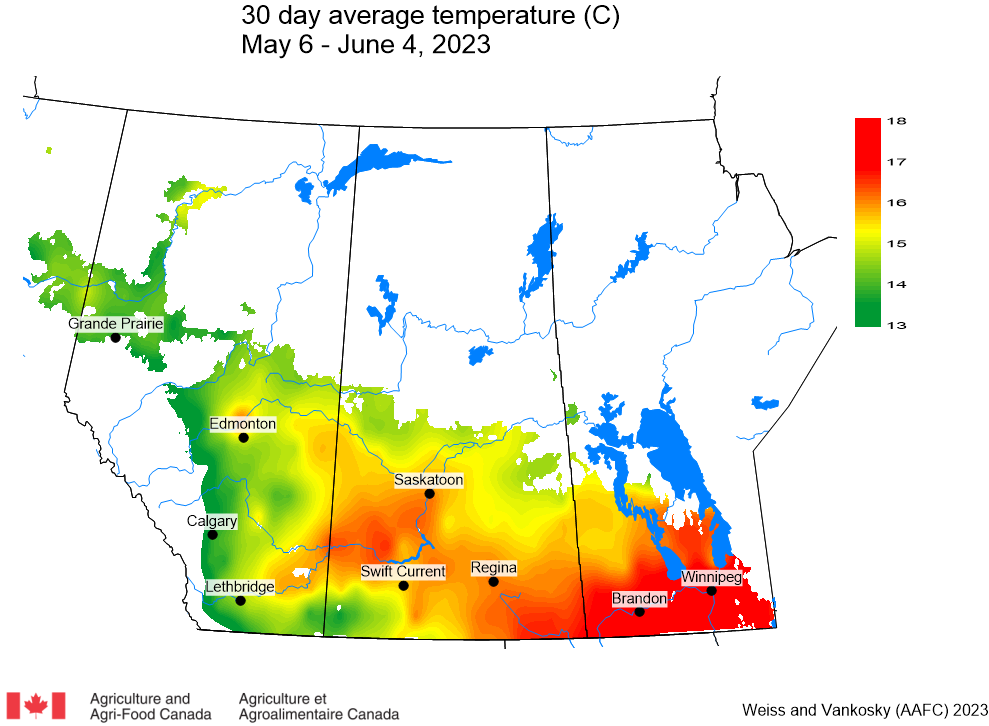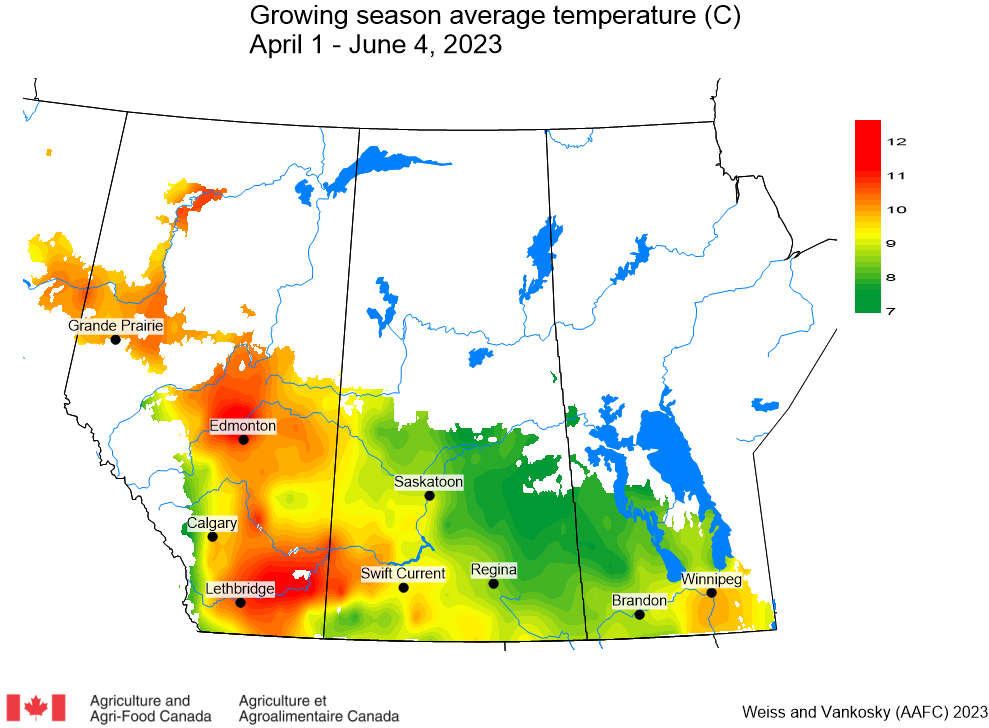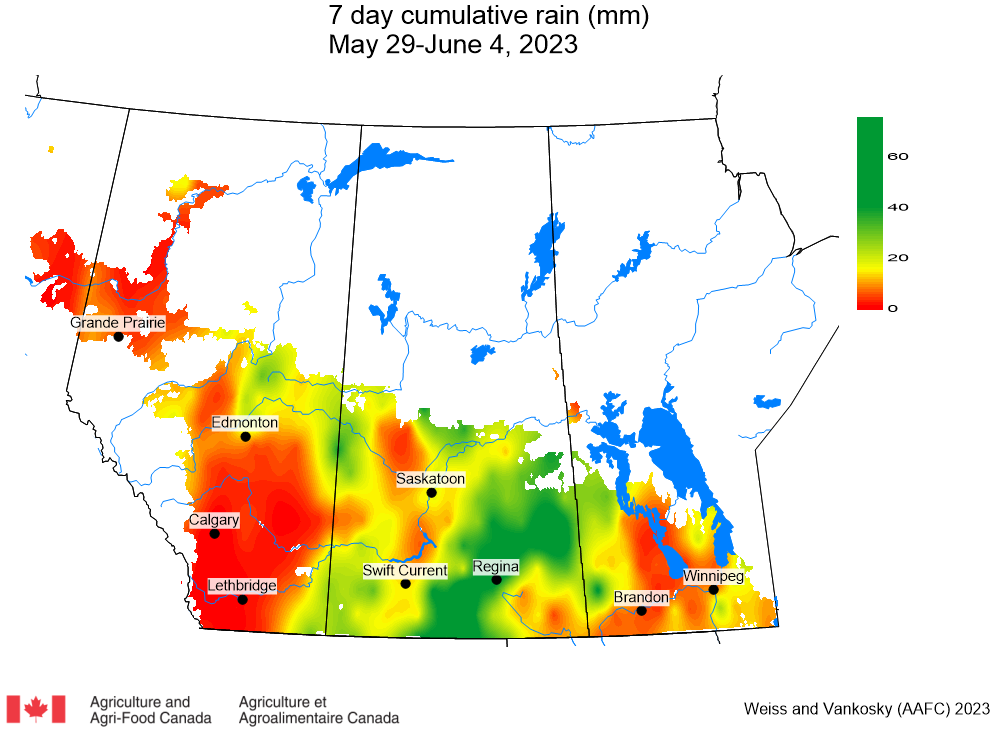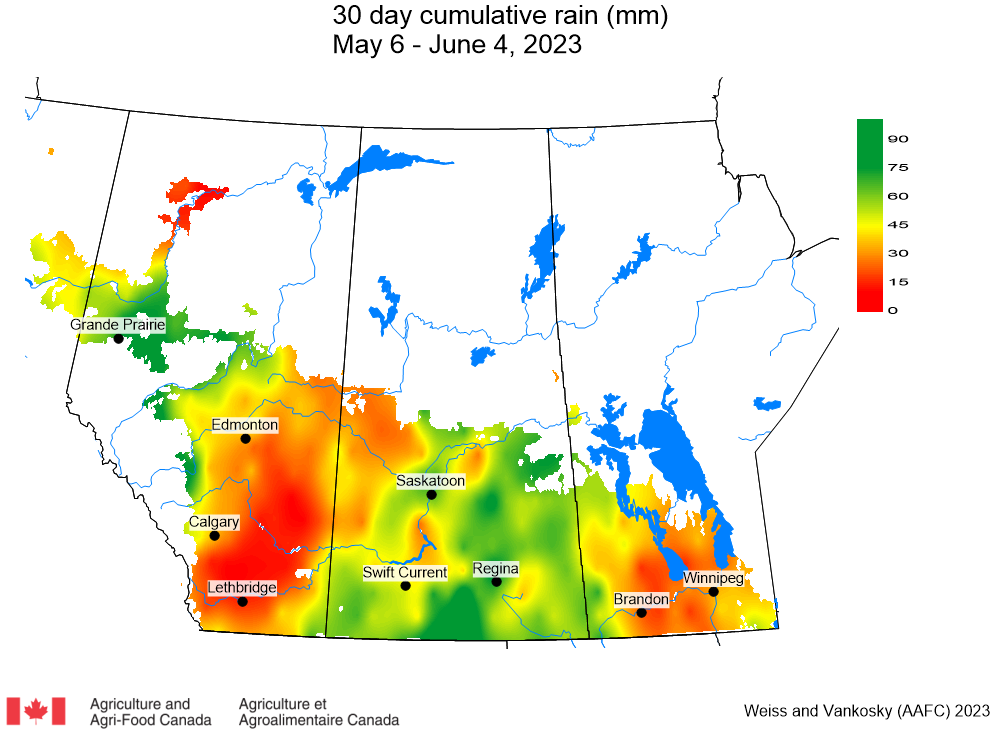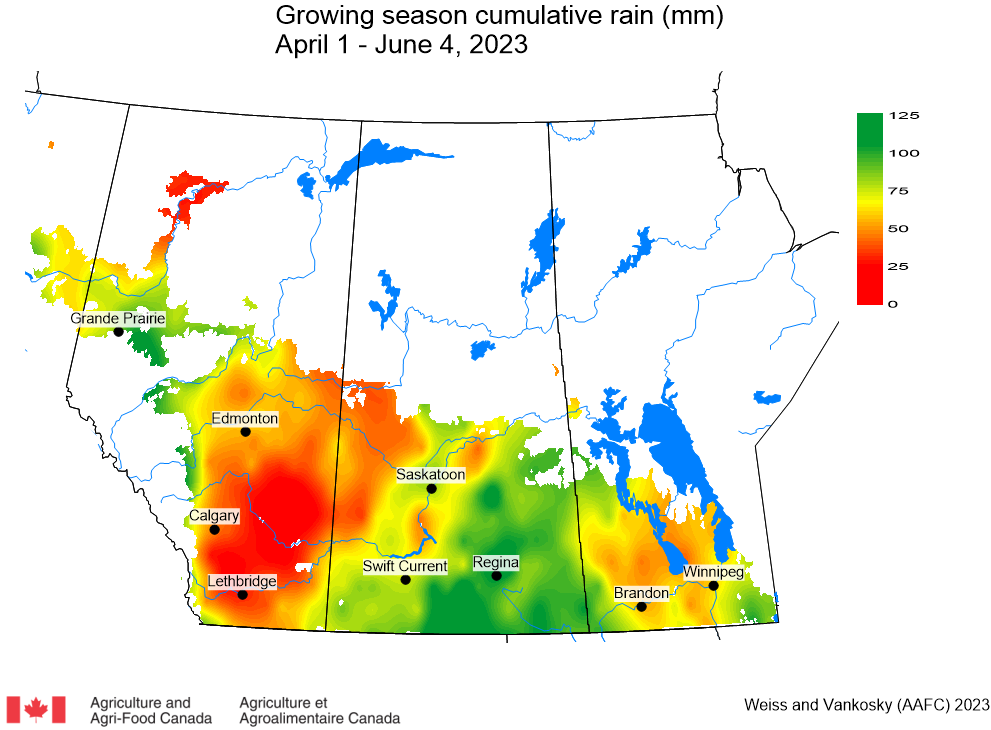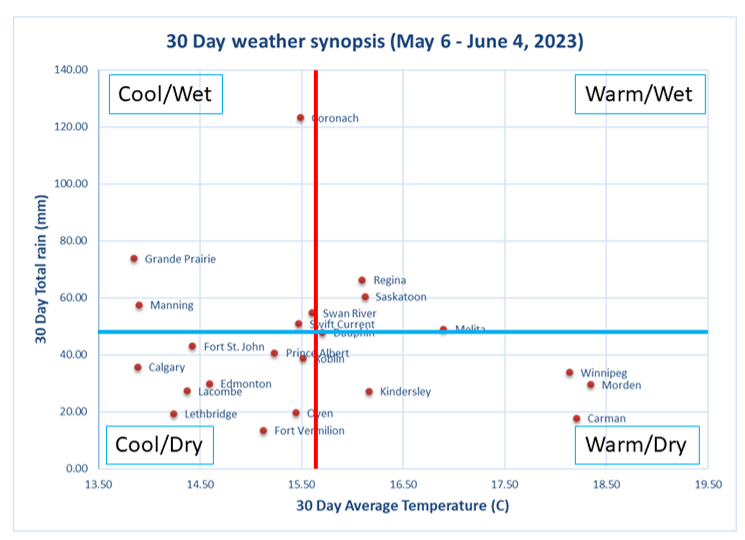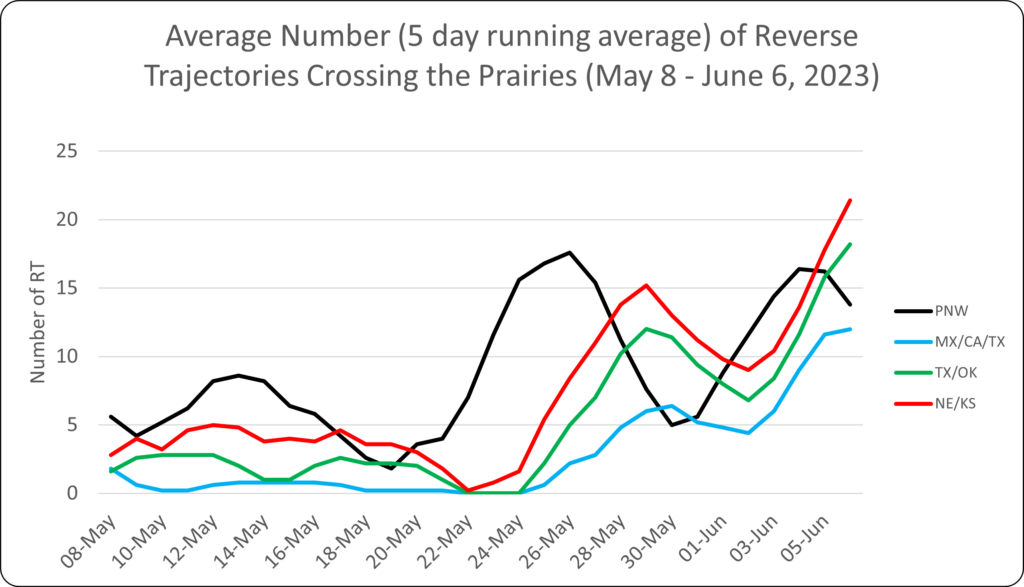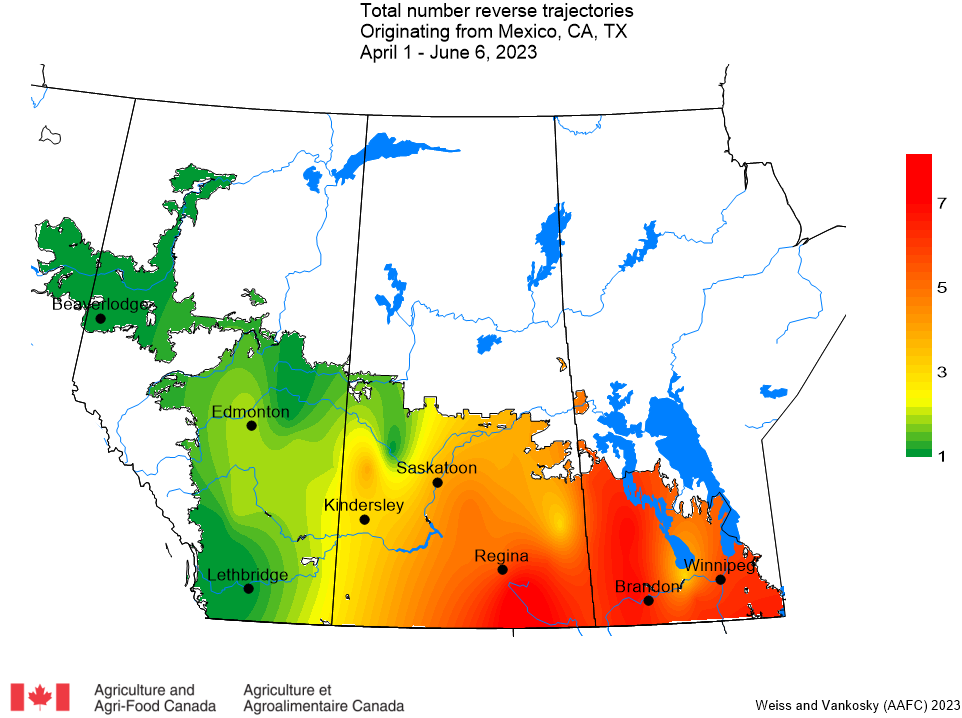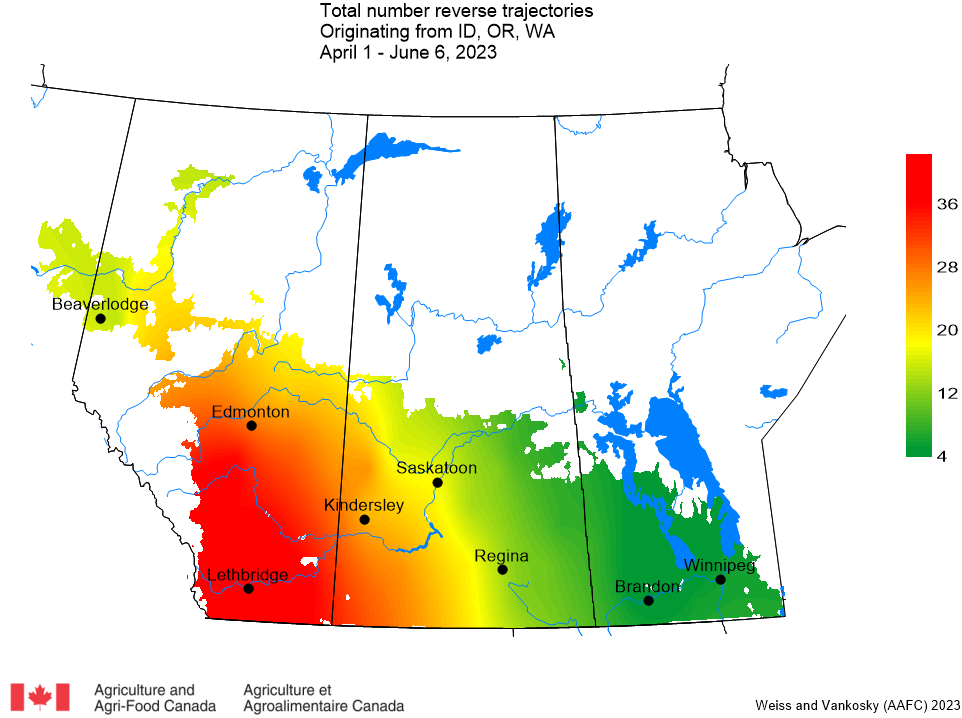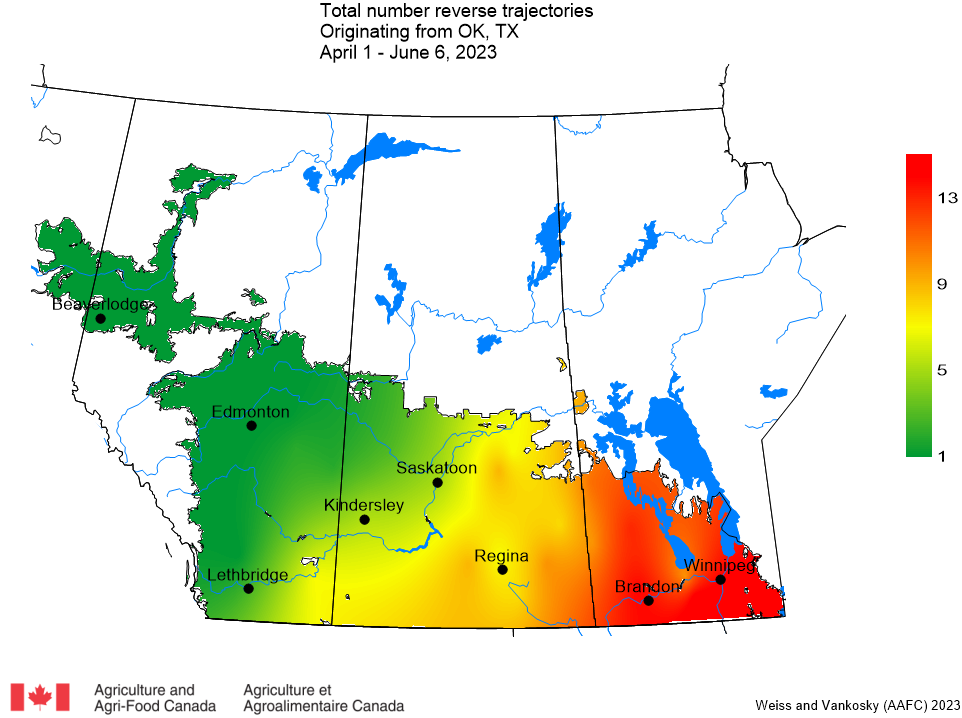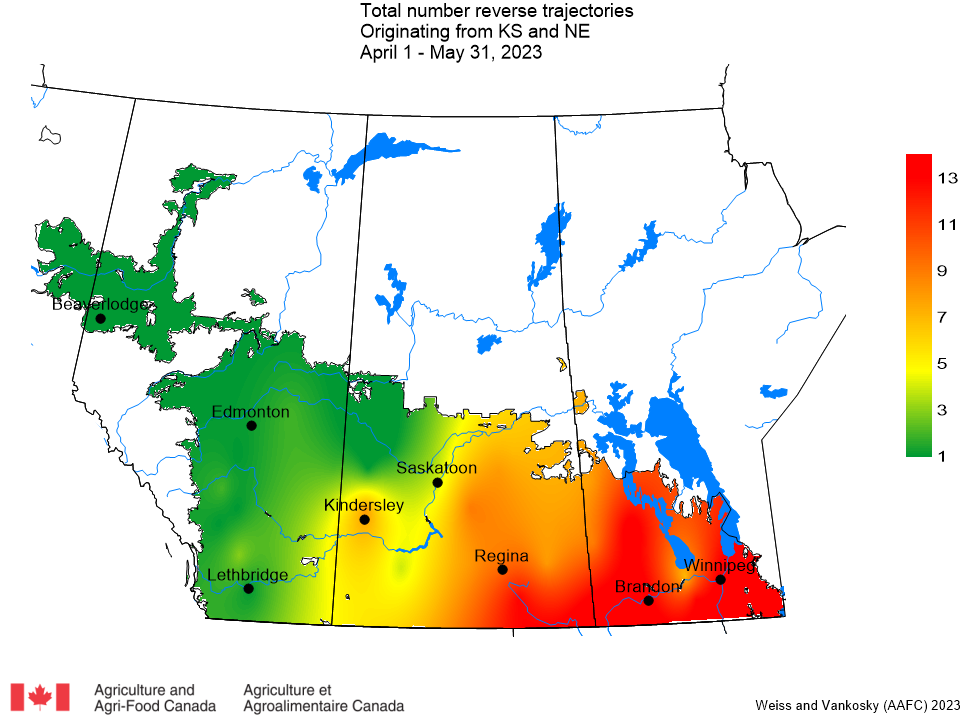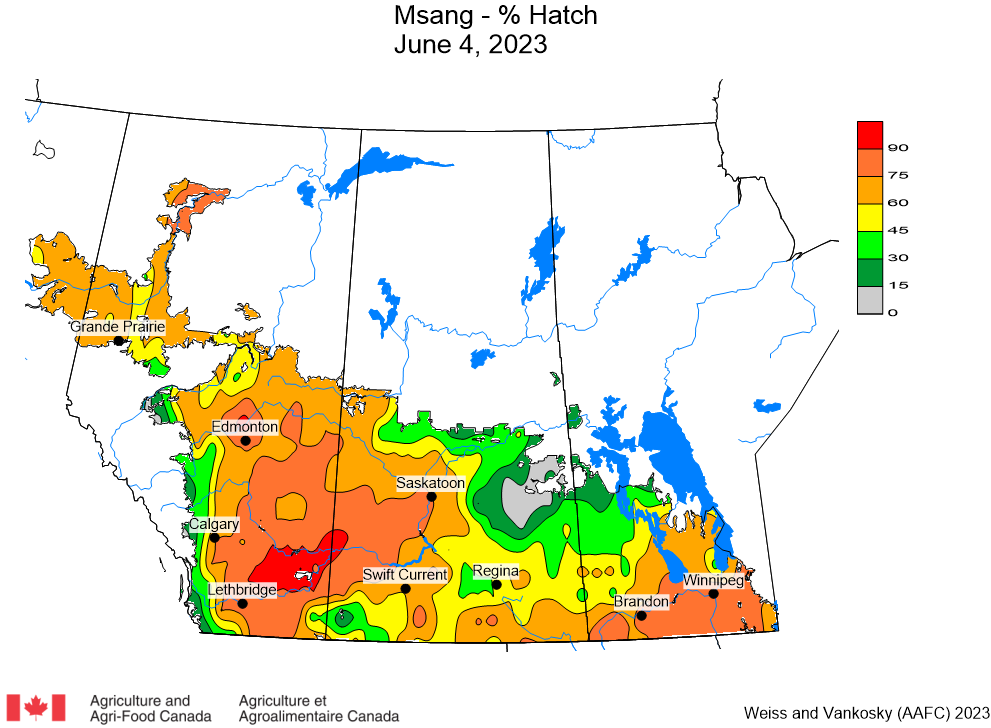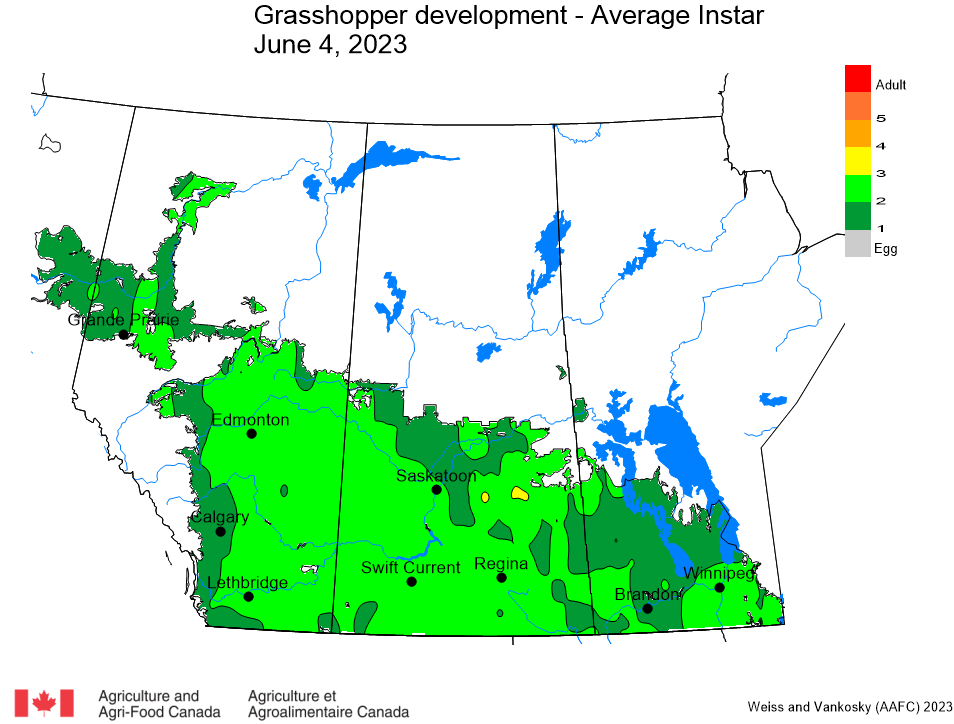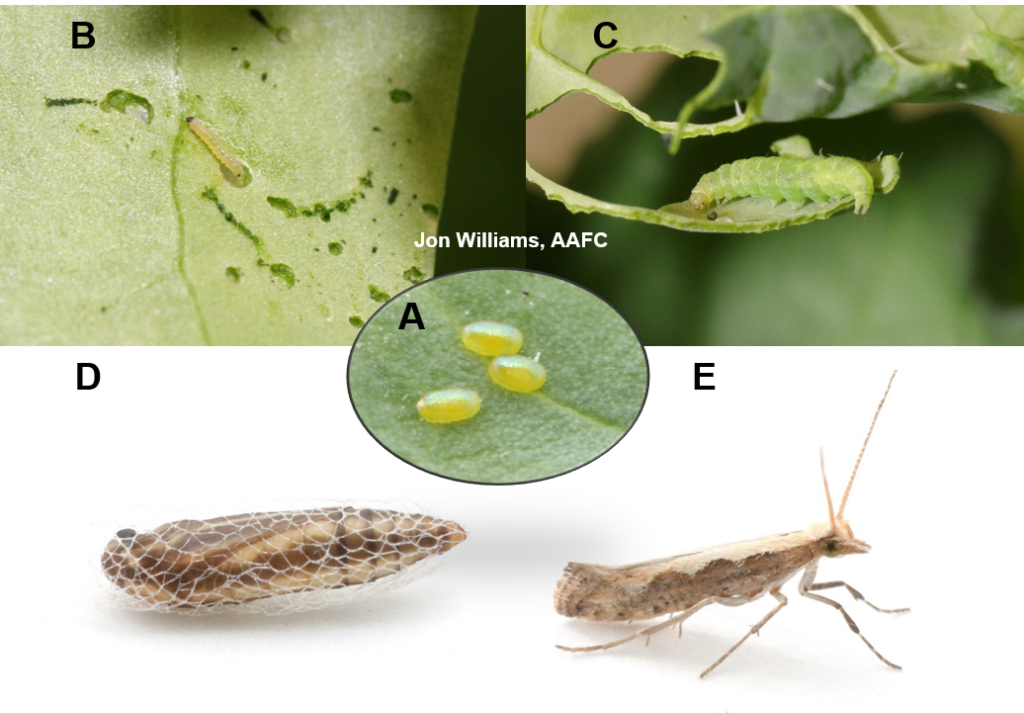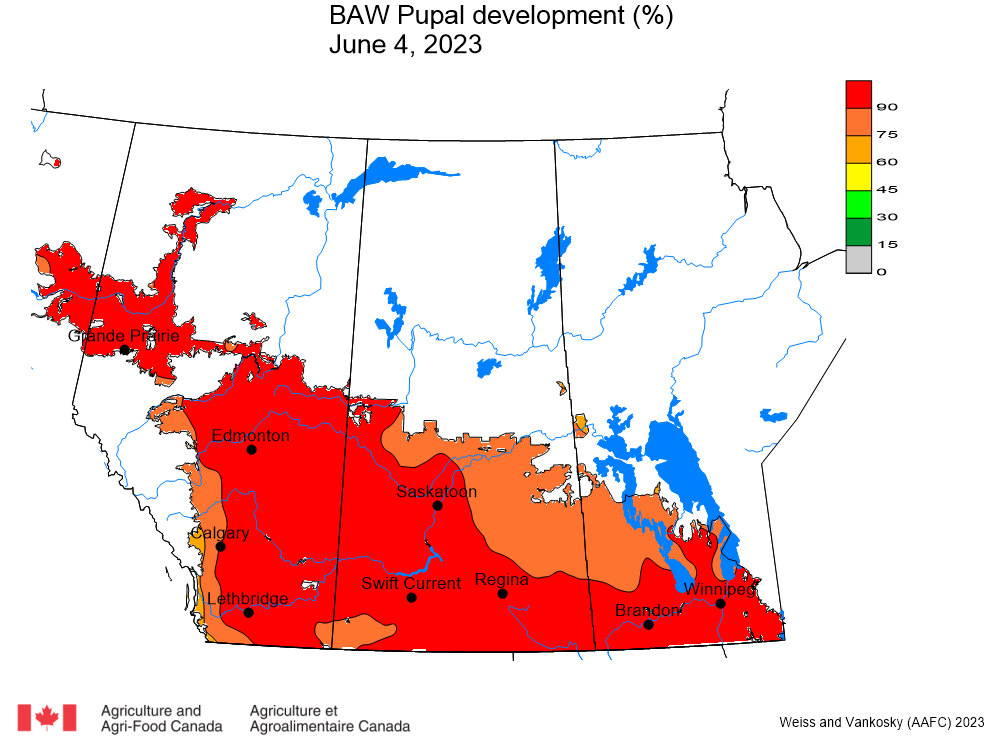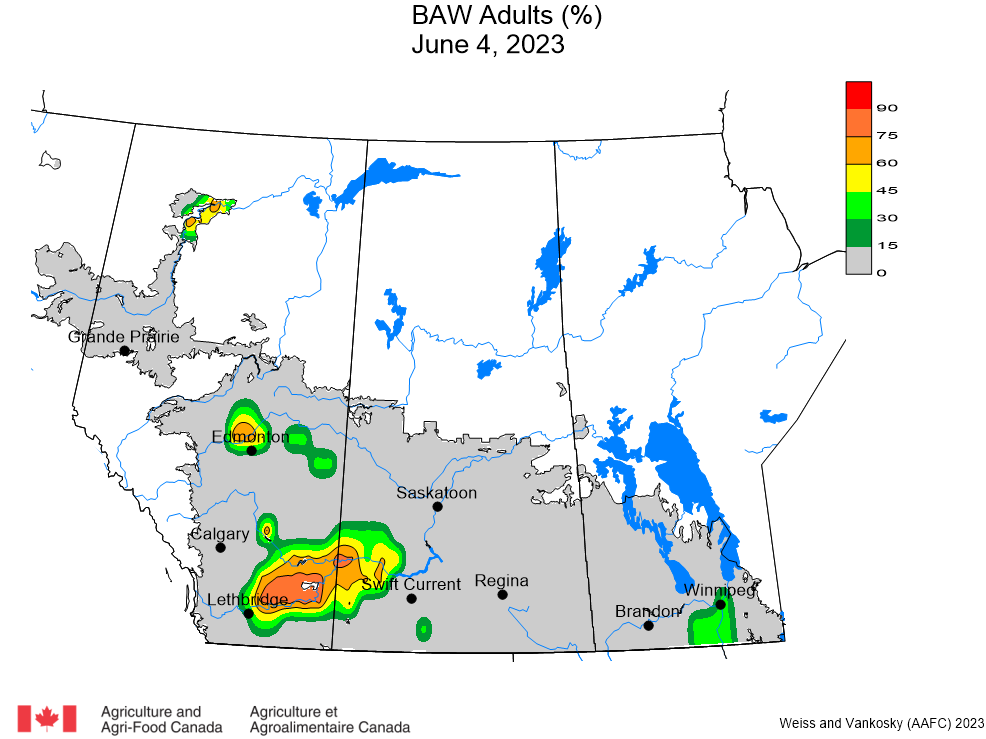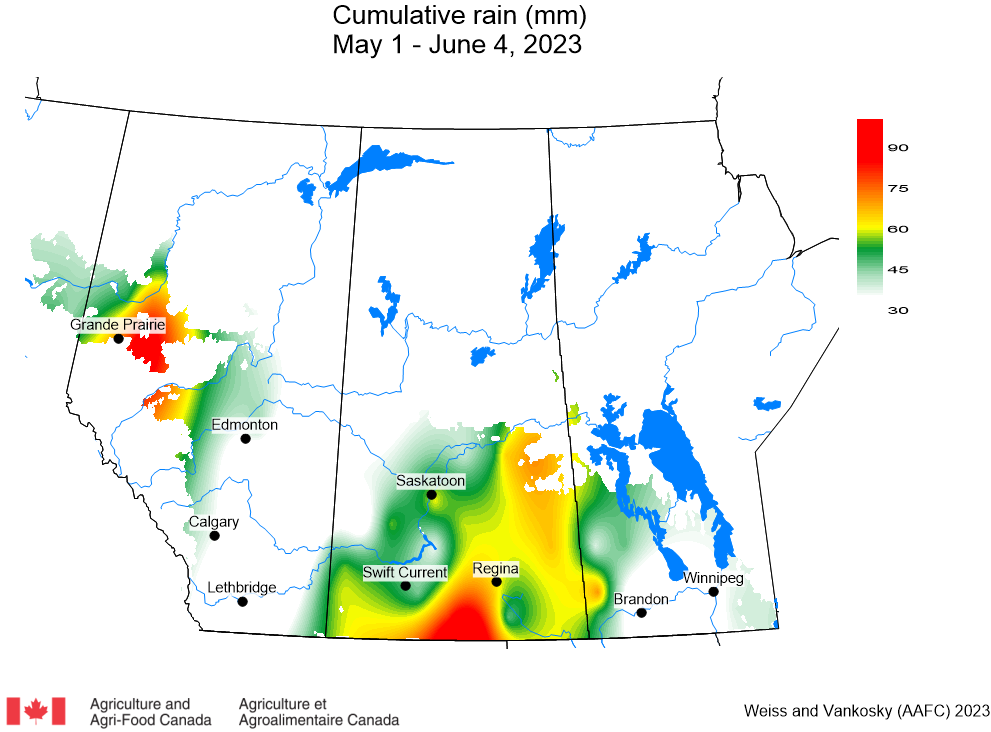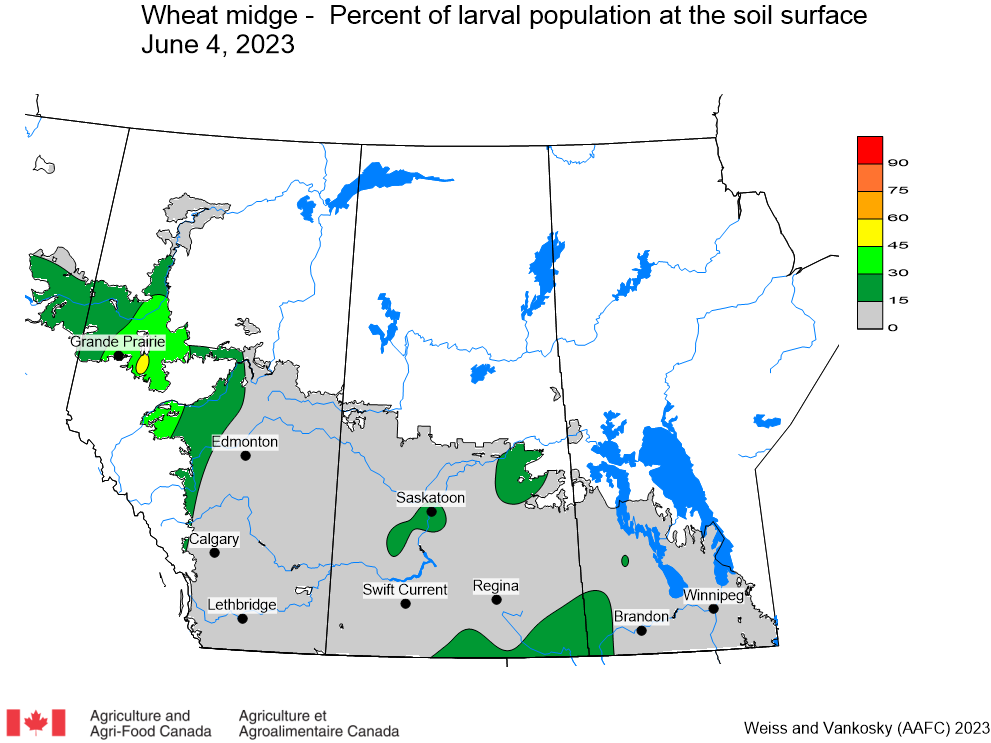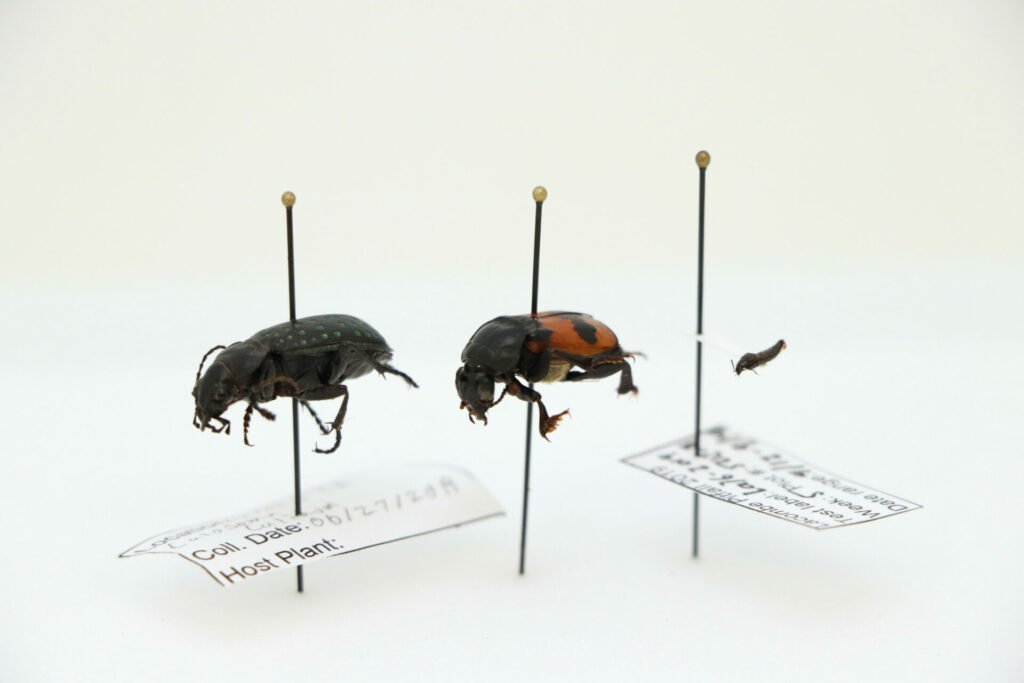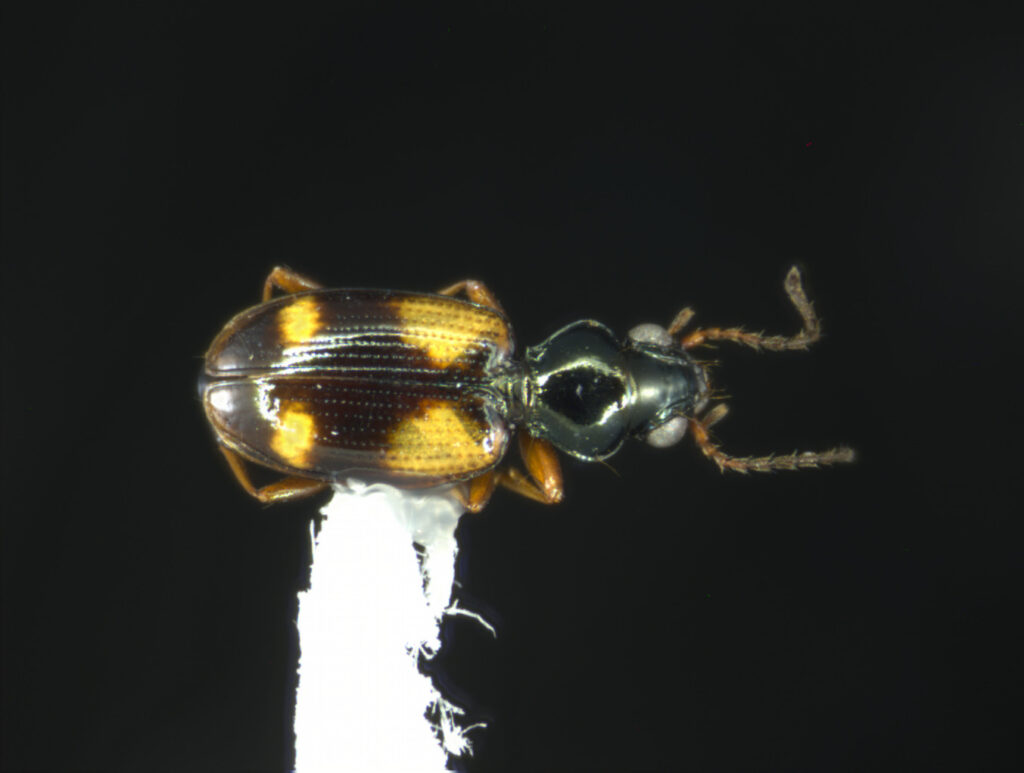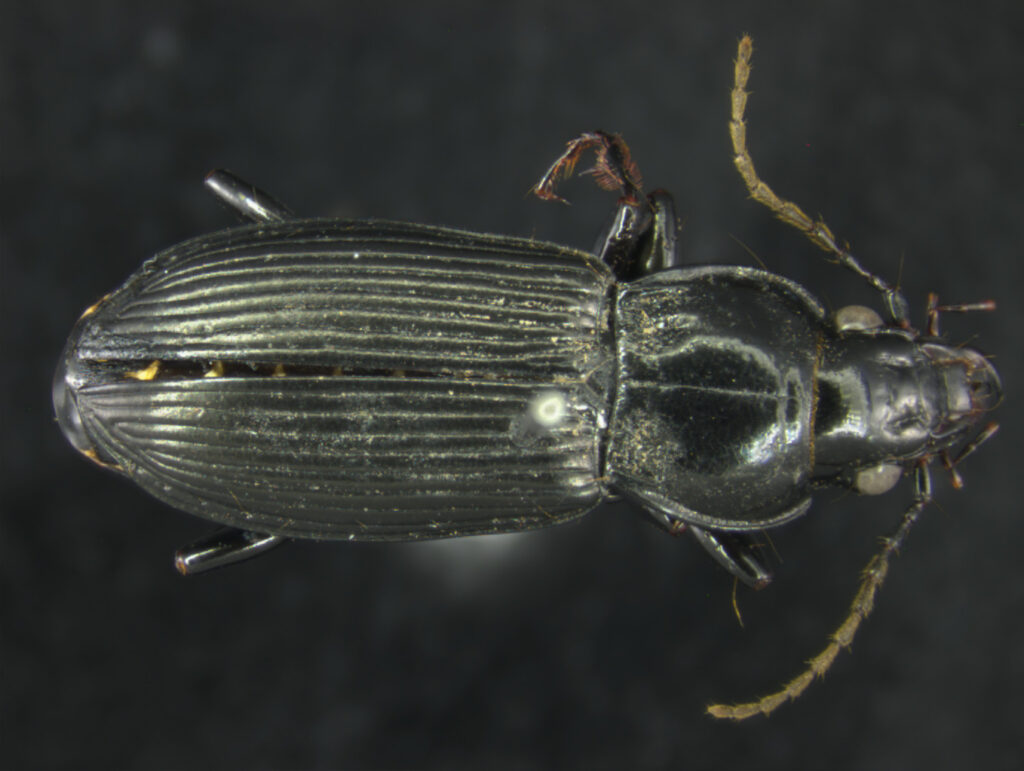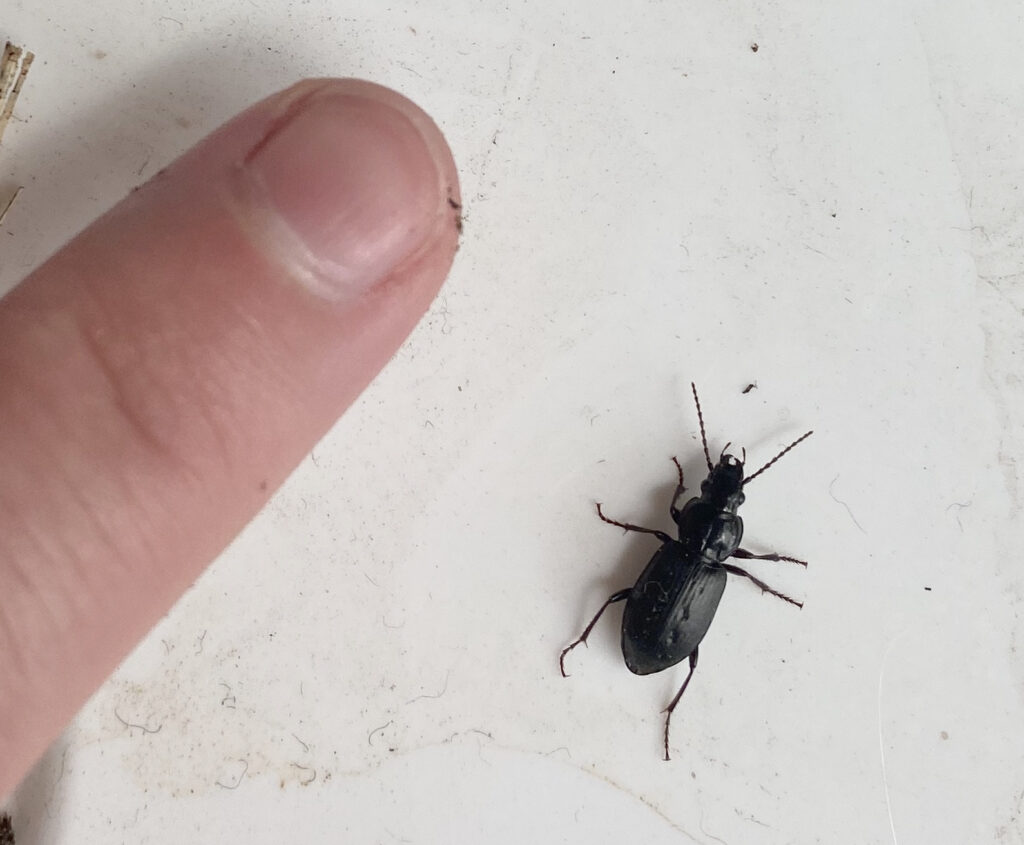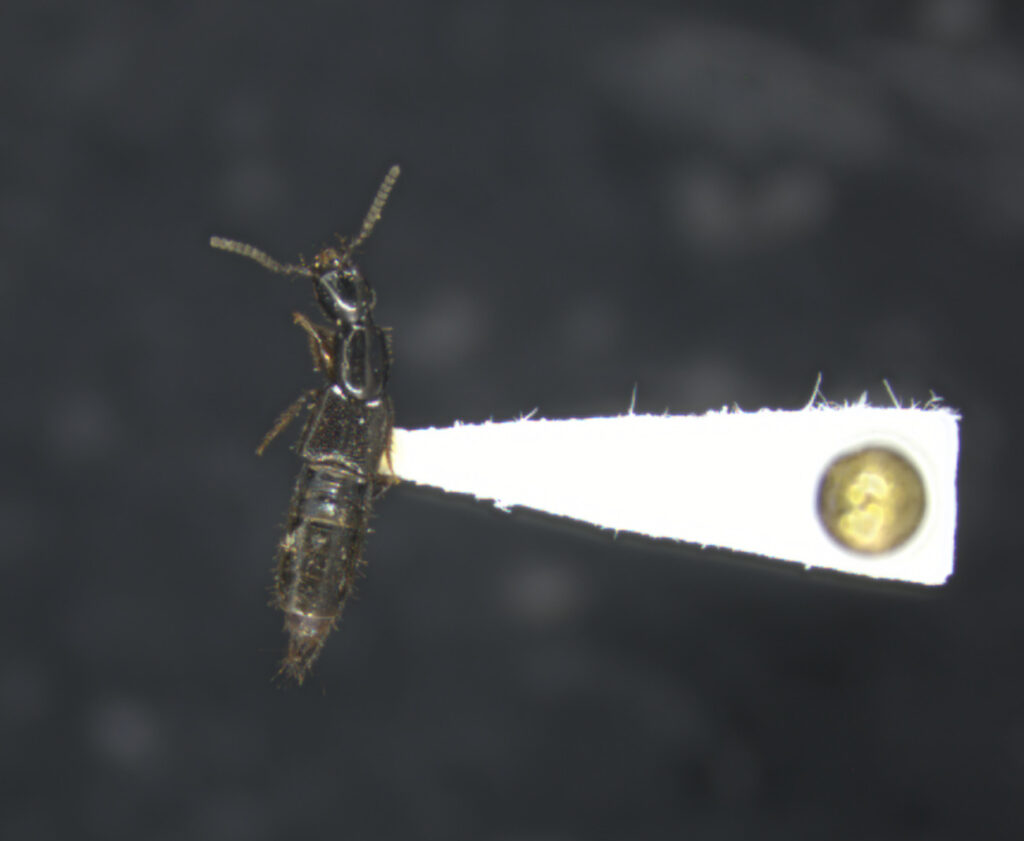Insect scouting and monitoring season is getting into full swing!
Weather patterns in May and so far in June have been perfect for the development of some insect pests, but suboptimal for others. However, it is hard to generalize, as some parts of the prairies have been wet and others dry. Similarly, some areas have been very warm, while others have been cooler. This year it will be very important to scout and to monitor insect populations at the field-scale.
Grasshoppers thrive in warm, dry conditions. This week, some 4th instar nymphs were spotted in ditches in southwestern Saskatchewan, although there are many first, second and some third instar nymphs as well. Signs of damage are starting to appear. Overall grasshopper development continues to be ahead of schedule and two-striped grasshoppers continue to be prevalent.
Diamondback moths that arrived in early May have likely reproduced and adult moths found now could be from the first generation produced on the prairies. Diamondback moths develop rapidly when it is warm and their population densities can build up quickly with each generation. Be ready to scout if pheromone traps in your area have detected diamondback moths this spring.
Bertha armyworm development is also well ahead of schedule – pupal development could be 90% complete in some areas and adult moths could already be flying around. Watch the provincial websites in Alberta, Saskatchewan, and Manitoba for reports on bertha armyworm pheromone trap captures for your area over the next few weeks.
This week, the Insect of the Week featured ground beetles and rove beetles! Both can prey on different life stages of the pea leaf weevil and on other insect pests (and slugs!).
Please read this week’s posts in the Weekly Update for more information about the insects listed above and for a sneak peak of wheat midge development!
Remember, insect Monitoring Protocols containing helpful insect pest biology, how and when to plan for in-field scouting, and economic thresholds to help support in-field management decisions. All are available to read or download for free!
To receive Weekly Updates automatically, please subscribe to the website!
Questions or problems accessing the contents of this Weekly Update? Please contact Dr. Meghan Vankosky (meghan.vankosky@agr.gc.ca) to get connected to our information. Past Weekly Updates, full of information and helpful links, can be accessed on our Weekly Update page.

